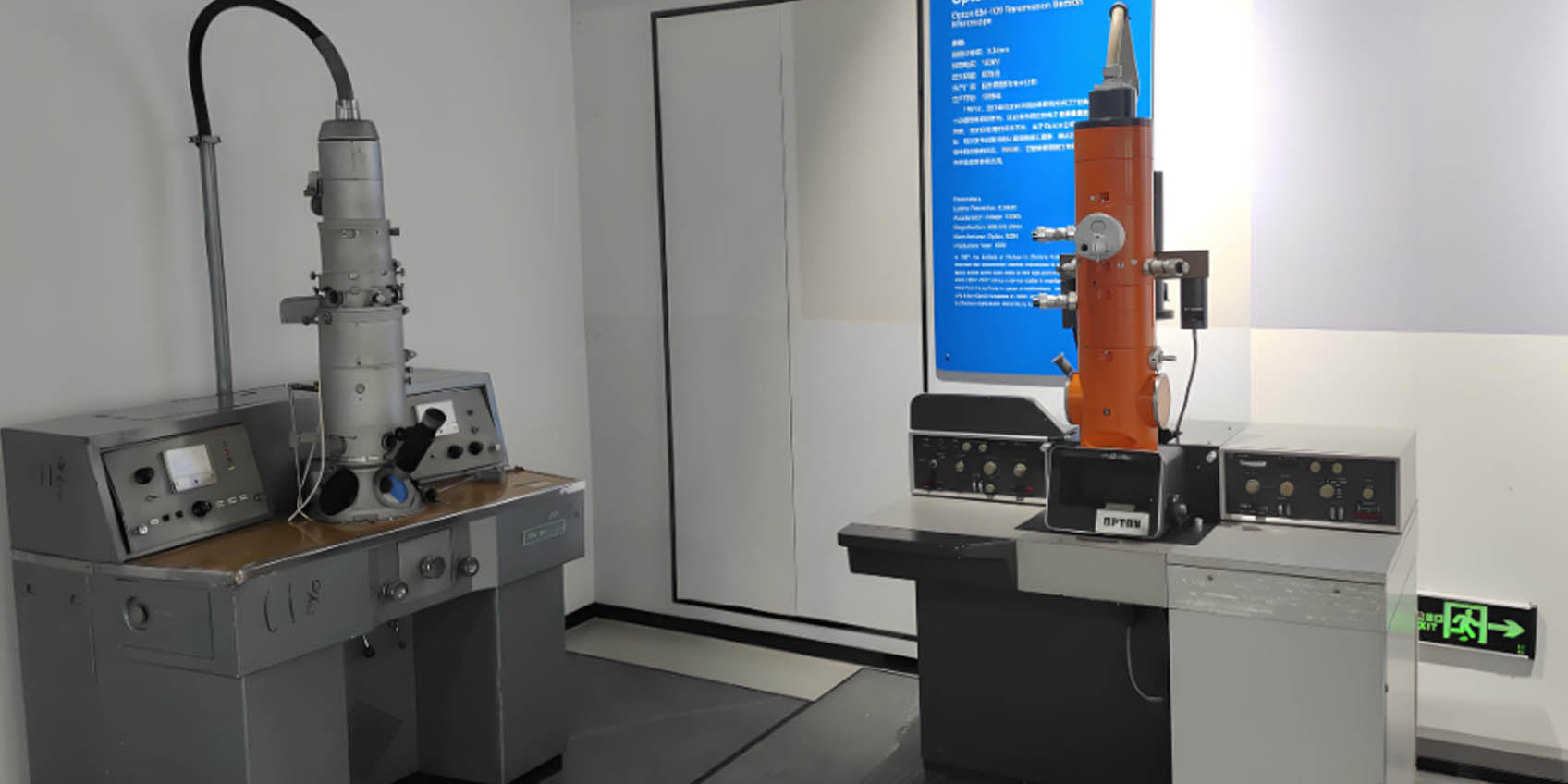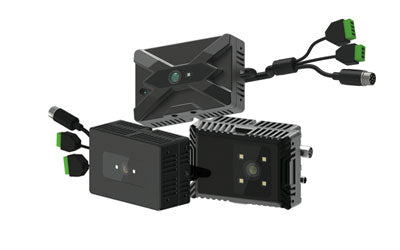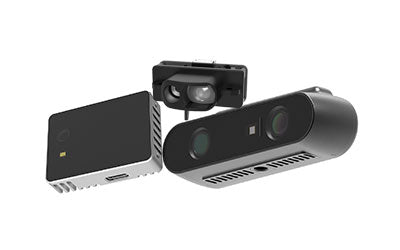Enhancing Electron Microscopy with TOF Tech for Advanced 3D Imaging

What is an Electron Microscope?
An electron microscope is a type of microscope that uses an electron beam instead of visible light for imaging. Compared to traditional optical microscopes, electron microscopes offer higher resolution and can observe cell structures, molecules, and even atomic-level details. This is because the wavelength of electrons is much shorter than that of light, allowing for a more precise observation of the microscopic world.
Electron microscopes are widely used in fields such as life sciences, materials science, nanotechnology, and semiconductor manufacturing. Their introduction has greatly advanced scientific research, providing unprecedented microscopic observation capabilities.
How Does an Electron Microscope Work?
An electron microscope works by using an electron beam to irradiate the sample instead of light. When the electron beam hits the sample, it generates secondary electrons, reflected electrons, or transmitted electrons, which are captured by sensors and converted into images. Due to the short wavelength of electrons, electron microscopes can offer much higher resolution, allowing microscopic structures to appear more clearly.
Advantages of Electron Microscopes
Electron microscopes have several obvious advantages compared to traditional optical microscopes, with the most notable being their extremely high resolution. The resolution of an electron microscope can reach the nanometer scale, far surpassing optical microscopes. This enables scientists to observe structures as small as individual atoms. This capability is crucial for studying nanomaterials, virus structures, or organelles at the microscopic level.
In addition, electron microscopes can perform 3D imaging of samples, providing a richer and more detailed perspective, further enhancing our understanding of the microscopic world.
What is TOF Technology?
TOF (Time of Flight) technology is a distance measurement technique based on the time it takes for a light pulse to travel from the sensor to the object's surface and back. This technology can accurately calculate the distance between an object and the sensor and achieve high-precision 3D imaging by measuring the time of flight of the light. TOF technology is widely used in fields such as infrastructure monitoring, robot navigation, autonomous driving, and medical imaging.
TOF sensors operate similarly to LiDAR (Laser Imaging Detection and Ranging), but instead of using a laser beam, TOF uses short light pulses to achieve distance measurement. By accurately calculating the time difference between the light pulse emission and reception, TOF technology can obtain depth information with millimeter-level precision. TOF sensors can generate 3D point cloud data to help users analyze and assess the state of objects.
Combining TOF Technology with Electron Microscopes
The combination of TOF technology and electron microscopes can further improve the accuracy and depth analysis of electron microscopy imaging. TOF sensors measure the time of flight of light pulses, enabling real-time acquisition of the 3D spatial data of samples. When combined with electron microscopes, TOF technology not only enhances imaging precision but also provides additional spatial information, greatly expanding the potential applications of electron microscopes. This combination allows for more precise and comprehensive studies of microscopic structures.
1. Improving Resolution and Imaging Depth
Electron microscopes themselves already have ultra-high resolution, allowing observation of surface details at the nanometer scale. However, when combined with TOF technology, the depth perception provided by TOF adds a new dimension to electron microscopy. By capturing 3D depth information from the sample's surface, TOF sensors can provide data on the sample's three-dimensional structure. This allows scientists to not only view flat images but also perceive the internal microstructures of the sample. This is particularly important for studying complex microstructures, such as cellular internal structures, nanomaterials, and multi-layered micro-organisms. The combination of TOF technology adds more analysis angles and depth to scientific research.
2. Optimizing Sample Analysis
In traditional electron microscopy, the analysis of complex samples often requires multiple steps and may involve adjusting the focus or positioning of the microscope repeatedly to obtain clear images. TOF technology provides precise 3D data, capturing detailed information on both the surface and depth of the sample, reducing the need for repeated adjustments. When combined with the surface imaging data from the electron microscope, TOF technology allows for a more comprehensive analysis of the sample in a single scan, especially when dealing with highly complex 3D structures. This greatly enhances the efficiency of sample analysis, enabling researchers to focus on the most critical parts of the sample and saving considerable time.
3. Increasing Operational Efficiency
Traditional electron microscope operations often require frequent adjustments and repositioning of the sample to obtain images from different angles or depths. TOF technology, through 3D scanning, can provide comprehensive spatial data in a short amount of time, reducing the need for frequent adjustments of the microscope. This not only increases the operational efficiency of the microscope but also reduces disruptions to the sample during observation. Furthermore, TOF technology's automation capabilities enable continuous scanning, further enhancing researchers' work efficiency. By combining TOF technology, researchers can acquire key data more quickly, speeding up research progress, especially in large-scale sample testing and complex research environments, where TOF significantly reduces the cumbersome steps involved in traditional microscopy operations.
4. Enhancing Data Integration and Multidimensional Analysis
After integrating TOF technology, electron microscopes can not only provide traditional 2D images but also generate 3D point cloud data related to depth. This data can be fused with results from other sensors, such as chemical sensors or thermal sensors, for multidimensional analysis, providing researchers with more detailed information about the sample. Through the integration of multidimensional data, scientists can gain a deeper understanding of the physical, chemical, and biological characteristics of the sample. This data integration capability is particularly valuable when studying complex biological samples, nanomaterials, or composite materials.
5. Real-Time Monitoring and Dynamic Observation
The application of TOF technology in electron microscopes is not limited to static image acquisition; it also enables real-time dynamic monitoring. By incorporating TOF technology into electron microscopy, researchers can observe changes in the sample under specific environmental conditions, such as how materials respond to different temperatures, pressures, or chemical environments. This allows for a clear display of microscopic structural changes during dynamic processes, greatly expanding the scope of electron microscope applications. Scientists can obtain real-time data during experiments, providing more flexibility and comprehensive experimental analysis.
Future Development of Electron Microscopes
With advancements in technology, electron microscopes will gradually integrate with cutting-edge technologies like TOF, enabling real-time depth scanning and higher-precision 3D imaging. This will open new perspectives for research in nanotechnology, life sciences, and other fields.
Conclusion
The combination of TOF technology and electron microscopes has brought revolutionary breakthroughs in the study of microscopic structures. By providing more accurate depth data, improving resolution and operational efficiency, optimizing sample analysis, and enhancing multidimensional data analysis capabilities, TOF technology allows electron microscopes to present a more comprehensive view of the sample's structure and characteristics.
This technological integration not only accelerates scientific research but also opens up more possibilities for exploration in the microscopic world. As technology continues to evolve, the integration of TOF with electron microscopes will play an increasingly important role in fields like life sciences, materials science, and nanotechnology, driving microscopic research to deeper levels.
Synexens 3D Of RGBD ToF Depth Sensor_CS30

Our professional technical team specializing in 3D camera ranging is ready to assist you at any time. Whether you encounter any issues with your TOF camera after purchase or need clarification on TOF technology, feel free to contact us anytime. We are committed to providing high-quality technical after-sales service and user experience, ensuring your peace of mind in both shopping and using our products.
-
Postado em
CS30





